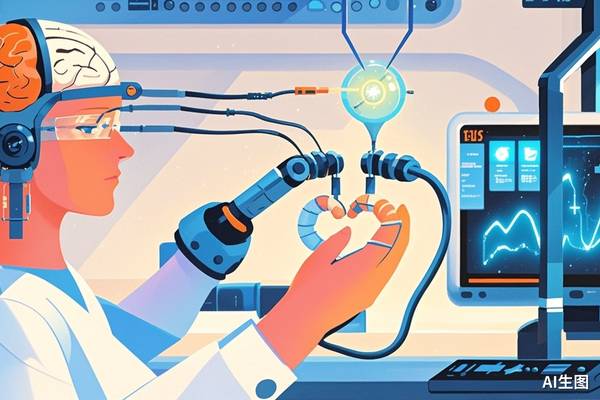The year 2025 is regarded as the first year of brain-computer interface (BCI). BCI experiments are being rapidly implemented, and capitals are vying to enter the field. In the wave of large models, people have come to realize that BCI may become the decisive factor in the future game between humans and highly intelligent AI agents.
Four years ago, in a phone call lasting less than an hour, Tao Hu, the founder of Brain Tiger Technology, secured 30 million yuan in angel investment, which was the fastest financing he had ever obtained.
On the other end of the phone was Chen Tianqiao. “How many years do you think it will take to apply BCI to healthy people to enhance their brains?” Chen Tianqiao asked Tao Hu. “About 10 years,” replied Tao Hu, who had met with hundreds of investors, most of whom expected a return period of 5 – 8 years.
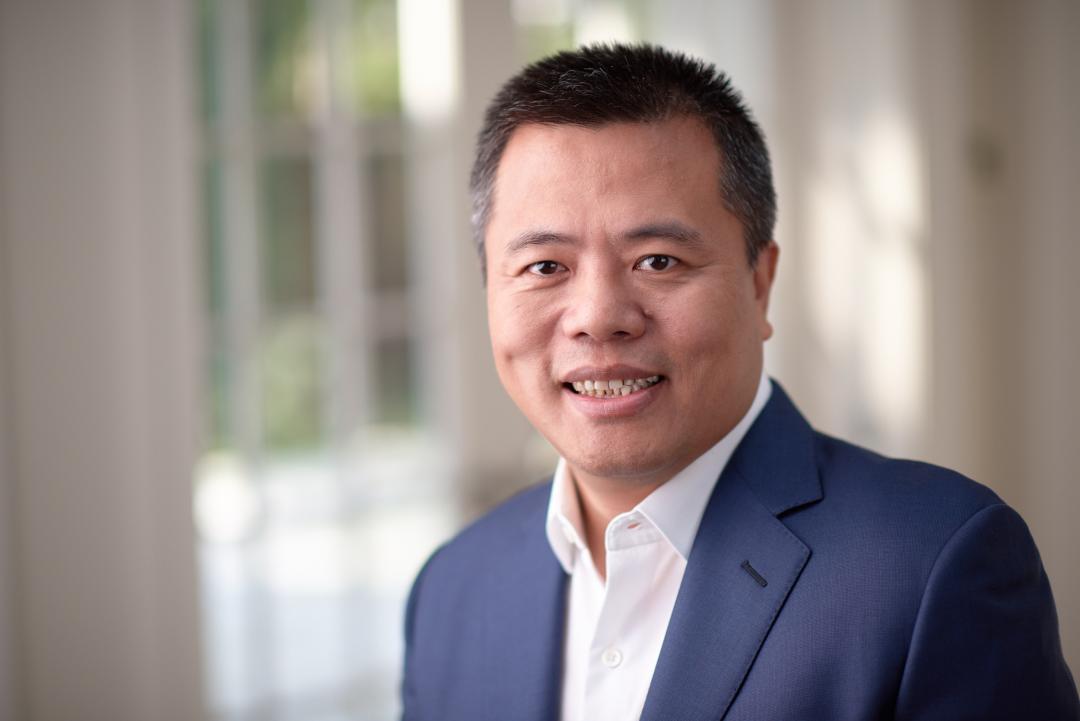
Chen Tianqiao
“Ten years is impossible. It would be great if you can achieve it in 20 – 30 years. Take the money and do your research with peace of mind.” In the first three rounds of financing of Brain Tiger Technology, Shanda, under Chen Tianqiao, participated in all of them. It was not only the sole investor in the angel round but also the largest institutional investor. Encountering such a “patient” angel investor as Chen Tianqiao at the beginning of his entrepreneurship gave Tao Hu great confidence.
In 2025, Brain Tiger had already gained a great reputation in the industry. However, in 2019, BCI was not yet a popular field. In 2021, a “psychic monkey” was connected to the BCI developed by Neuralink, founded by Elon Musk, and played a ping – pong game with its mind. This scene was regarded by the industry as the most representative moment to illustrate the function of BCI to the outside world.
The brain is the most complex, fragile, and mysterious organ of the human body. To some extent, decrypting the information – processing mechanism of the brain and the principle of consciousness generation is the most important key to understanding the origin of human life and exploring the essence of cognition.
Currently, there are two mainstream technical routes for BCI: the invasive approach and the non – invasive approach. “The invasive approach requires a craniotomy to connect the BCI to the inside of the brain. This is recognized as the most hardcore and high – threshold technical route,” said Yang Yang, the vice – dean of the Tianqiao and Chrissy Chen Institute for Brain Research (China), to China Entrepreneur.
At the clinical medicine level, BCI can help disabled patients control prosthetic limbs and enable aphasics to communicate with their minds. New therapies for some neurological diseases, such as Parkinson’s disease, epilepsy, and Alzheimer’s disease, can also be developed with the help of BCI science. However, due to the extremely high research threshold, clinical resources and medical device qualification certificates are necessary for BCI companies.
At the beginning of 2025, Brain Tiger Technology announced the self – developed high – throughput implantable flexible BCI, which has achieved both real – time motion decoding and real – time Chinese language decoding. It is currently the only company in the world with both motion and language dual – decoding technologies.
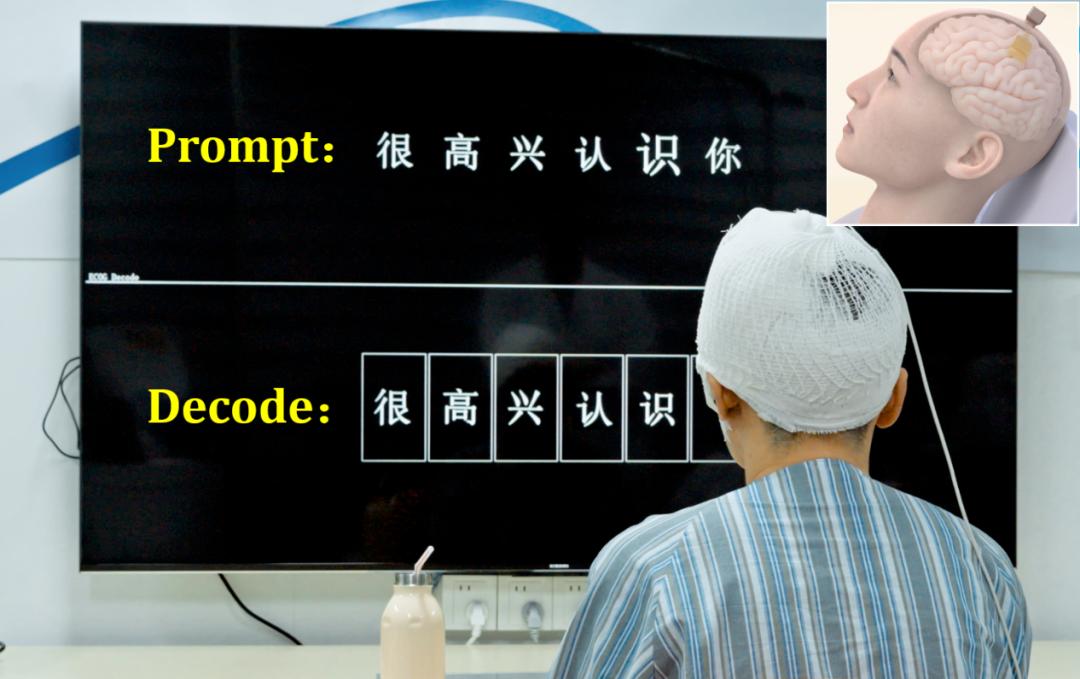
Real – time Chinese language decoding
In December 2024, in Huashan Hospital in Shanghai, the neural signals in the language area of a female patient with an implanted flexible BCI were successfully decoded to form the characters “Happy New Year 2025”, and the patient issued an instruction to make a “heart – shaped gesture” with a robotic hand. That is to say, without speaking, the BCI directly analyzed the patient’s thoughts in the brain and made the robotic hand act accordingly. In April 2025, a 19 – year – old epilepsy patient also had a flexible BCI implanted and played the game Honor of Kings with “brain control”.
Although BCI science is gradually being recognized by the outside world, Tao Hu still walks on thin ice at every step: “Doing BCI is like dancing in chains.”
The deeper the BCI enters the brain, the more accurate the collected signals are. How to maximize the utilization of the brain and minimize the damage is the core problem for all researchers in the invasive approach. Both top – level hardware and software are indispensable.
“When Shanda invested in Brain Tiger, there were only a few companies in the world doing invasive BCI, such as Neuralink and Blackrock in the United States. Brain Tiger Technology was almost the only one in China,” said Yang Yang.
In the past two years, large models have become a key variable in the dawn of the BCI industry.
The underlying logic of BCI is information collection and transmission, while large models are about data training and generation. A better BCI will bring more effective training data. A large model with stronger generation ability will give positive feedback to the BCI.
Yang Yang described the combination of BCI and artificial intelligence as: “It’s like two people climbing a mountain. AI starts from the southern foot of the mountain, and BCI climbs from the northern foot. Eventually, they will meet at the top of the mountain and develop into true wisdom.”
What used to be a narrow path has now become a broad road. Tech giants such as OpenAI and Meta have also seen the potential and entered the BCI industry across different fields. A large amount of capital has also poured in. According to the data from the BCI Investment Map by Tianfeng Securities, the annualized growth rate of domestic financing events in the BCI industry from 2018 to 2024 exceeded 30%. In Q3 of 2025 alone, there were 20 new financing events, and 70% of the projects were before the Series B. “This is not science fiction but an emerging industrial singularity,” Tianfeng Securities wrote in the report.
The development of Brain Tiger is also accelerating. Tao Hu revealed that Brain Tiger has conducted a total of 53 short – term clinical trials so far. At the end of October, Brain Tiger Technology will conduct the world’s first long – term clinical trial of a fully wireless, fully implantable, and fully functional flexible cortical BCI.
In Tao Hu’s view, the current stage of BCI development is only the first phase – turning patients back to normal people. In the future, with the development of technology, BCI will eventually surpass the physical limits of human beings, that is, “turning normal people into superhumans”.
This coincides with Chen Tianqiao’s expectations for brain science. Yang Yang told China Entrepreneur that as the world’s largest private brain science research institution, the Tianqiao and Chrissy Chen Institute for Brain Research is researching how to uncover the mysteries of the brain, cure brain diseases, and enhance brain functions. The projects it focuses on include basic brain research, BCI, and artificial intelligence.
Elon Musk once mentioned that his research on BCI stems from his belief that AI will ultimately threaten humanity, and the decisive factor for humans lies in BCI. “Humans don’t need to worry about AI replacing them because brain science is progressing, and so is the human brain,” said Yang Yang.
From “Surviving” to “Living with Dignity”
“People only need to think about what message to send in their brains, and the email will be sent without any manual operation.” In 2015, when Chen Tianqiao first came into contact with brain science at the California Institute of Technology, he envisioned such a scene in his mind. This science – fiction – like scenario similar to that in The Matrix is becoming a reality.
At the end of October 2025, the Tianqiao and Chrissy Chen Institute for Brain Research will cooperate with Brain Tiger Technology to conduct the most cutting – edge human BCI surgery in Huashan Hospital: a long – term clinical trial of the world’s first fully wireless, fully implantable, and fully functional flexible cortical BCI will be carried out.
What do “fully wireless” and “long – term” mean? To understand this, we need to first clarify the pain points of current technologies. In May 2024, Neuralink implanted a BCI device in a patient, but the electrodes fell off within a few weeks after the operation. According to Dr. Walter Greenleaf, a neuroscientist at Stanford University, about 80% of the devices implanted in the first patient of Neuralink fell off within a few months after the implantation. Obviously, long – term implantation of BCI is a major challenge that the industry urgently needs to overcome.
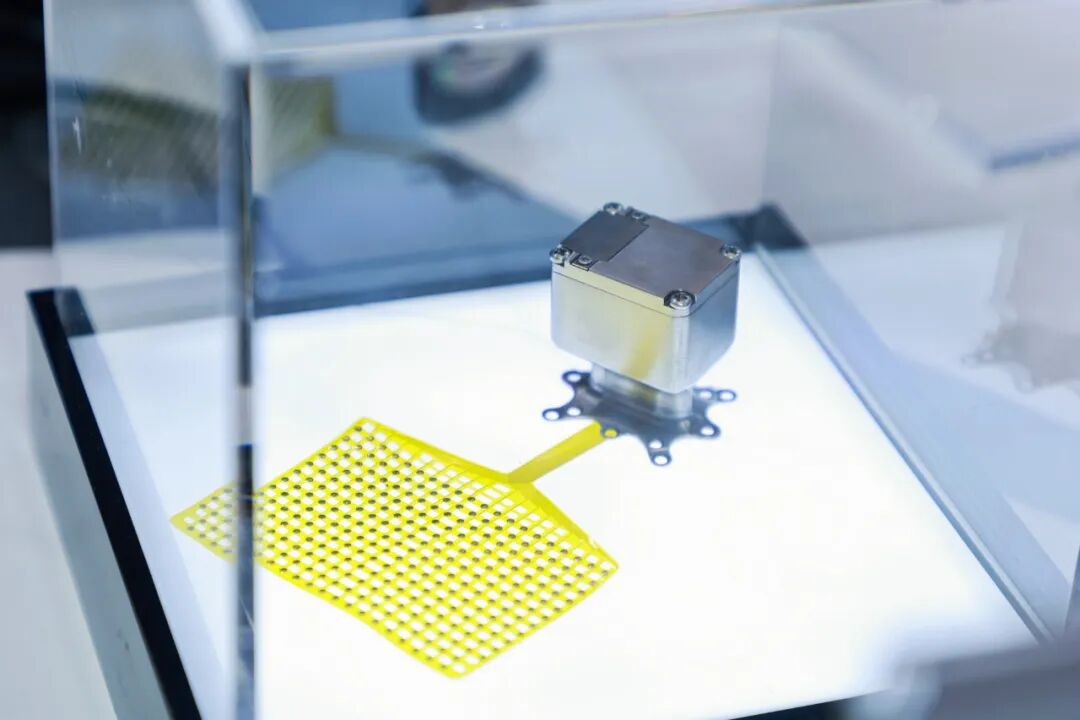
Brain Tiger Technology’s flexible micro – cortical BCI
Currently, BCI is mainly used for the treatment of terminal and severe brain diseases, such as amyotrophic lateral sclerosis (ALS) and paralysis. At present, Brain Tiger has mainly completed wired and short – term implantations. After a patient undergoes a craniotomy and has a BCI implanted, there is a “pigtail” – a power cord and a data cable – connecting the BCI to the data – processing device.
In Tao Hu’s words, this does not “turn patients back to normal people”. Tao Hu believes that normal human daily life includes activities such as taking a bath and exercising. A wired BCI is like a high – voltage line of “infection risk” hanging over the patient’s head all the time. Brain Tiger chose the wired method mainly for safety reasons. Tao Hu revealed that in the early stage of technology R & D, Brain Tiger, Huashan Hospital, and the Tianqiao and Chrissy Chen Institute for Brain Research formulated a “three – step clinical strategy”:
Step one: After the patient’s skull is opened and the brain is exposed, during the surgical window of about dozens of minutes during the operation, a BCI is implanted in the patient to detect the quality of the signals collected by the electrodes.
Step two: The BCI is implanted for a short period, about one month, to test its safety and effectiveness. So far, Brain Tiger Technology has conducted a total of 53 patient trials in the first two stages.
Step three: Consider long – term implantation. Tao Hu hopes that patients can live with dignity and quality with the help of BCI, rather than simply maintaining their vital signs. Therefore, the future development of wireless BCI devices will be the main path.
Benchmarking against Elon Musk: Making Products with an Engineering Mindset
From the first day of Brain Tiger Technology’s establishment, Tao Hu has not hesitated to directly benchmark against Elon Musk. He believes that the product – making concepts of the two are highly consistent.
“The more divergent the scientific research is, the better. However, a good product manager must solve users’ problems.” In Tao Hu’s view, making BCI products is about finding a balance among the four dimensions of safety, reliability, efficiency, and universality. First, safety and reliability must be ensured, and then the number of effective “channels” should be increased.
Generally speaking, the more effective channels a BCI has, the higher the accuracy of the device in reading or writing neural signals in the brain. Currently, the N1 implant of Neuralink used in humans can support 1024 channels per device, which is the highest in quantity and is regarded as the world’s top – level technology.
Brain Tiger’s flexible BCI system uses a 256 – channel array, which is the highest in China. The density is 64 channels per square centimeter, which is 64 times that of traditional electrodes.
BCI is still a systematic project. Not only must the electrodes match the chips, but the chips must also match the algorithms. Tao Hu calls this “making products with an engineering mindset”, which is similar to Elon Musk’s “first – principles thinking”.
The operation of BCI mainly consists of four major steps: sensors (such as electrodes) to detect and record the neural signals generated by brain activities; pre – processing of the original and noisy neural signals; “translating” the signals into specific control instructions (for example, “move the cursor up” or “clench the fist”); and sending the instructions to external devices (such as a computer cursor, a robotic arm, a wheelchair, or communication software) to control their operations.
Currently, how to solve hardware problems such as the safety of electrode materials, rejection reactions, and battery heat dissipation are major challenges facing Tao Hu.
The brain environment is very special. Implanted devices will face problems such as body fluid corrosion and cell encapsulation. The technical safety of implanted electrodes is of crucial importance. In 1989, the American company Blackrock conducted human clinical trials with rigid Utah electrodes but failed to get approval for market launch. The reason lies in the problems of rigid electrodes. After implanting rigid electrodes into the cerebral cortex tissue, it is like inserting rows of steel needles into tofu, which not only causes trauma but also is prone to displacement.
Brain Tiger has chosen the technical route of micro – cortical flexible electrodes, which are attached to the surface of the cerebral cortex under the dura mater. In contrast, Neuralink uses deep – seated flexible electrodes, which are inserted into the cerebral cortex. Both technical routes have their own advantages and disadvantages. Although deep – seated electrodes can perform single – neuron – level collection, they cause greater trauma and cover a limited brain area.
In the future, Elon Musk envisions creating a “whole – brain BCI”. However, in Tao Hu’s view, “implanting deep – seated electrodes throughout the brain may not be the best way”. He believes that implanting deep – seated electrodes throughout the brain will not only “turn the brain into a mess but also collect limited effective data”. Brain Tiger chooses to place the electrodes under the dura mater and attach them to the surface of the cerebral cortex without penetrating the brain tissue, which can greatly reduce the damage to the brain and cover multiple brain areas.
Currently, Brain Tiger’s micro – cortical flexible BCI system has completed clinical trials of motion decoding and language decoding on some epilepsy patients. A patient with a tumor in the motor area was able to use WeChat and control a smart wheelchair with their mind two weeks after the operation. A patient with a tumor in the language area achieved a decoding accuracy of 71.5% for 394 commonly used Chinese syllables nine days after the operation, with a single – character time delay of less than 100 ms, which is also the highest level of real – time Chinese language decoding in China.
Recently, Brain Tiger combined with AI to achieve “super – human speech – rate communication”, that is, a single person can output 307 words per minute, which is more than twice the normal rate. Currently, Brain Tiger’s BCI can enable people to work with their minds, conduct real – time remote mind – to – mind conversations between two brains, etc.
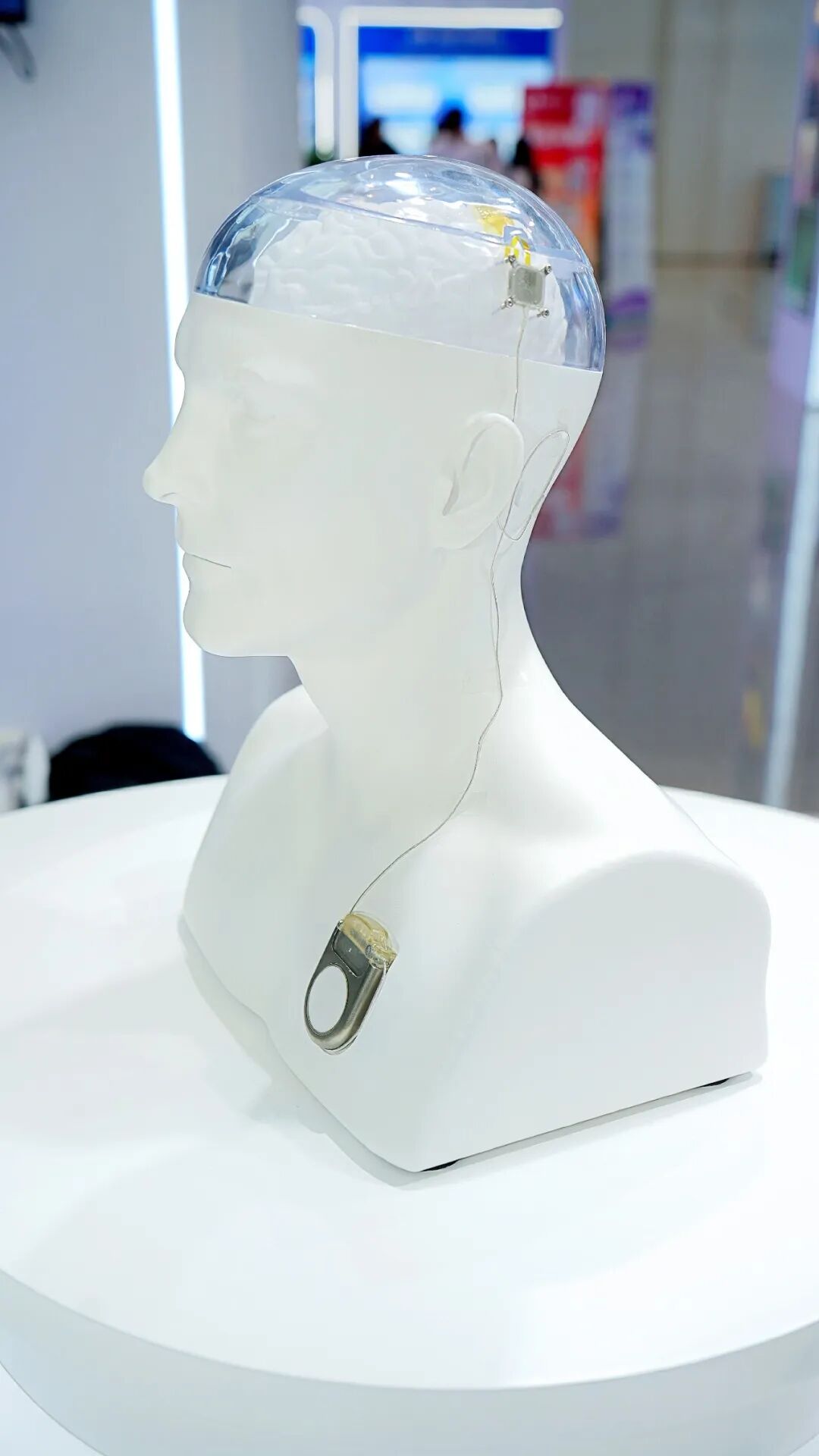
Wireless, fully implantable, and fully functional flexible cortical BCI
Another technical problem of BCI is heat dissipation. The brain is extremely sensitive to temperature. If the temperature is about 2 degrees higher than the normal body temperature, it will cause adverse reactions, even shock, commonly known as “getting confused due to high temperature”. Compared with most companies in the industry that place the devices outside the brain, Tao Hu’s team’s “wireless, fully implantable flexible cortical BCI” refers to the cardiac pacemaker and places both the battery and the wireless transmission system on the chest, which cleverly solves the heat – dissipation problem.
Going Public is Not the Ultimate Goal
After years of entrepreneurship, Brain Tiger Technology has already become one of the leading companies in the domestic BCI field. However, in the early
